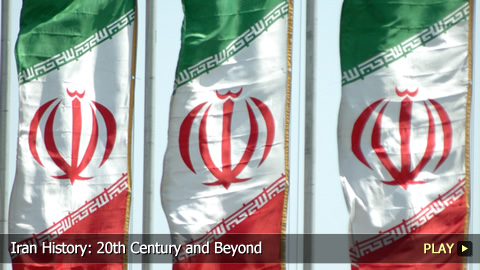Iran History: 20th Century and Beyond

Islamic Republic of Iran
Known officially as the Islamic Republic of Iran, and culturally as Persia, this country is recognized for its influence in the Middle East. Iran is also politically powerful due to its location, and its large reserves of petroleum and natural gas.
Persian Empire
While civilization in Iran dates back to 2800BC, the Persian Empire peaked in the sixth century BC under Cyrus the Great. Two centuries later, the Greeks – led by Alexander the Great – defeated the Persians, which led to the rise of western thought over the east. Muslims converted Persians to Islam in the seventh century AD, but eight hundred years later the Safavid dynasty embraced the Shi’ism branch of Islam, causing a lasting rift with the majority of Sunnis.
20th Century
Different forces struggled for power over the next centuries. By the early 1900s, Iran’s first national parliament was created. In 1925, the Qajar Dynasty fell and Iran’s Prime Minister and ex-general of the Persian Cossack Brigade, Reza Khan, became Shah, or king.
World War II
However, during World War II, neighboring USSR and influential Britain began suspecting that Iran was aligning itself with Germany. In 1941, they coerced the Shah into giving the throne to his son, Mohammad Reza Pahlavi.
Prime Minister Mohammad Mosaddegh
A decade later, Dr. Mohammad Mosaddegh was elected prime minister. He angered Britain by nationalizing Iran’s petroleum industry and oil reserves, which had been controlled by a British-owned company. This boldness contributed to him becoming Time Magazine’s Person of the Year for 1951.
Coup d’Etat
British Prime Minister Winston Churchill then boycotted Iranian oil and partnered with American president Dwight Eisenhower to launch Operation Ajax. The U.S. successfully coordinated their first coup d’état of a democratically elected, civilian government when Mosaddegh was arrested on August 19th, 1953. Years later, the United States admitted their mistake in deposing the popular leader, though Iranians never forgave their intervention.
Shah Mohammad Reza Pahlavi
The path was clear for the Shah Mohammad Reza Pahlavi to take unrestrained and complete control. Through violent and autocratic rule, he allowed his intelligence agency SAVAK to terrorize civilians and opponents alike. After emerging as a vocal opponent of the Shah’s White Revolution, religious and political figure Ayatollah Ruhollah Khomeini was swiftly arrested and later exiled.
Iranian or Islamic Revolution
By early 1978, protests and strikes erupted across the nation and marked the start of the Iranian or Islamic Revolution. Following the Shah’s departure the next year, Khomeini returned to the country and the Pahlavi dynasty fell. Once a national referendum made Iran an Islamic Republic on April 1st, 1979, a theocratic constitution was adopted and Khomeini became Supreme Leader.
Iran Hostage Crisic
Soon, resentment against the U.S. for assisting the Shah and its lack of support of the Iranian Revolution reached a simmering point when, on November 4th, 1979, a group of Iranian students took multiple hostages at the U.S. embassy in Tehran. Fifty-two Americans were held captive for 444 days until the Iran Hostage Crisis was resolved with the 1981 Algiers Accords.
Iran-Iraq War
Meanwhile, Iraqi leader Saddam Hussein sent his army to invade Iran on September 22nd, 1980, which began the eight-year Iran–Iraq War. Both sides saw over 500 hundred thousand casualties; but, this armed conflict was most notable for Saddam’s use of chemical weapons against Iran, among other tactics. The fact that Western powers supplied Iraq with those weapons further angered Iran.
Political Changes
Efforts were made to improve Iran’s economy following the 1988 ceasefire; for example, President Akbar Hashemi Rafsanjani implemented a pro-business policy. In 1997, the moderate reformist Mohammad Khatami promoted more democratic ideals and attempted to develop a friendlier tone with the West as Iran’s president.
Mahmoud Ahmadinejad
But by 2005, conservative populist Mahmoud Ahmadinejad was voted into power and he sharply rebuked any détente with the West. Despite the fact Iran had never invaded or attacked any nation, Ahmadinejad’s lack of respect for human rights and his pursuit of nuclear energy caused criticism and discontent, particularly with U.S. ally and nuclear power Israel. Months of protests followed his 2009 re-election, but Ahmadinejad’s regime remained firmly in charge.
Unstable Politics
Iran has endured centuries of unstable politics, and this has carried over into international conflicts and protests. The next one hundred years will undoubtedly be as full of change as the last.
